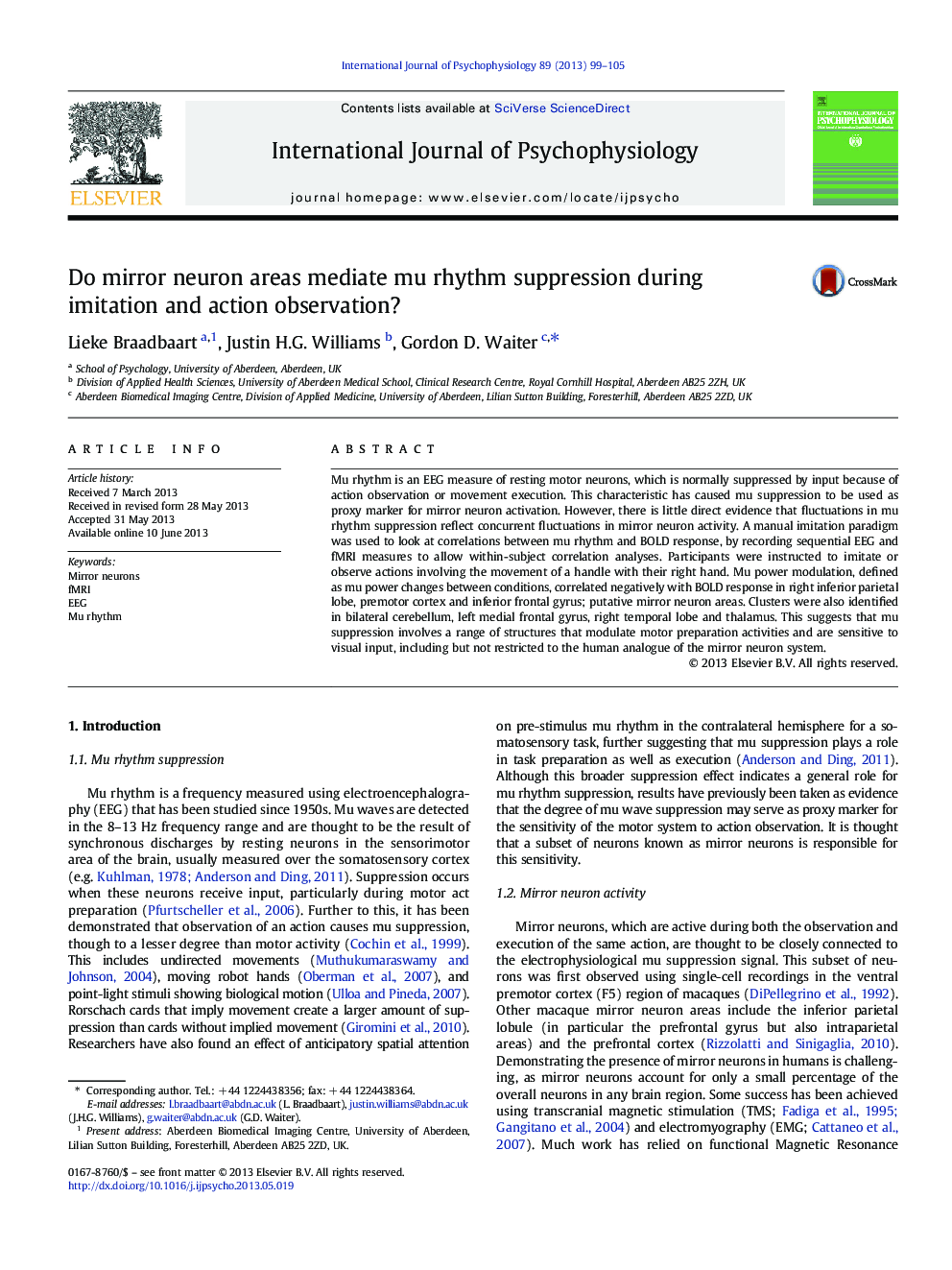| Article ID | Journal | Published Year | Pages | File Type |
|---|---|---|---|---|
| 930220 | International Journal of Psychophysiology | 2013 | 7 Pages |
•Mirror neuron activity is thought to mediate mu suppression but evidence is lacking.•Sequential EEG–fMRI correlates electrophysiology to BOLD signal without MR-artefact.•Mu suppression modulates activity in motor preparation and attention brain areas.•Mu rhythm suppression is not specific to activation of the mirror neuron system.
Mu rhythm is an EEG measure of resting motor neurons, which is normally suppressed by input because of action observation or movement execution. This characteristic has caused mu suppression to be used as proxy marker for mirror neuron activation. However, there is little direct evidence that fluctuations in mu rhythm suppression reflect concurrent fluctuations in mirror neuron activity. A manual imitation paradigm was used to look at correlations between mu rhythm and BOLD response, by recording sequential EEG and fMRI measures to allow within-subject correlation analyses. Participants were instructed to imitate or observe actions involving the movement of a handle with their right hand. Mu power modulation, defined as mu power changes between conditions, correlated negatively with BOLD response in right inferior parietal lobe, premotor cortex and inferior frontal gyrus; putative mirror neuron areas. Clusters were also identified in bilateral cerebellum, left medial frontal gyrus, right temporal lobe and thalamus. This suggests that mu suppression involves a range of structures that modulate motor preparation activities and are sensitive to visual input, including but not restricted to the human analogue of the mirror neuron system.
